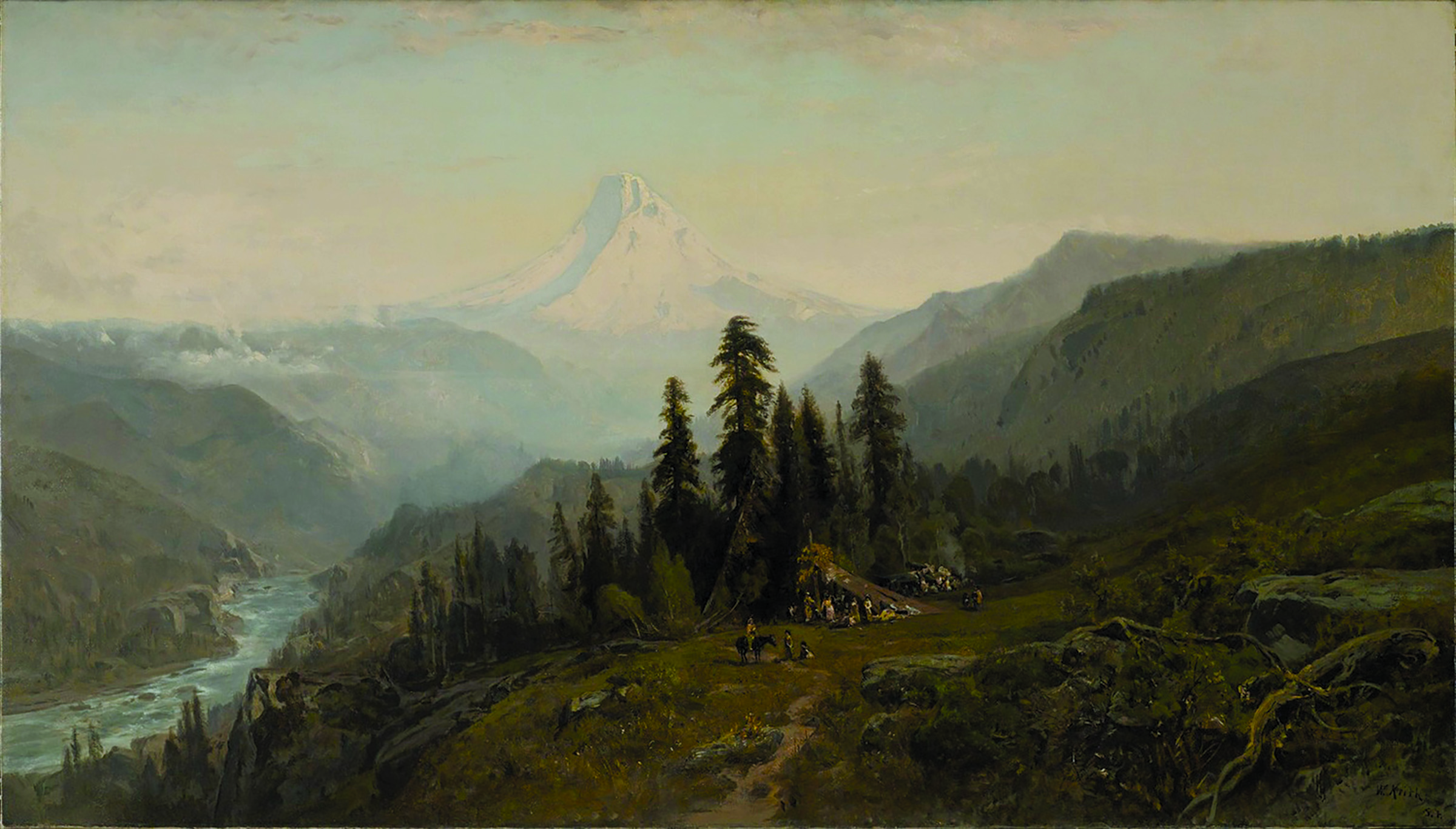-
03
-
03
-
03
-
03
-
03
-
03
-
03
-
03
-
03
-
03
-
03
-
03
-
03
-
03
-
03
-
03
-
03
-
-
-
03
-
03
-
03
-
03
-
03
-
03
-
03
-
03
-
-
03
-
03
-
03
-
03
-
03
-
-
03
-
03
-
03
-
03
-
-
03
Musical Ecology in Aspen
Wednesday, July 27, 2022
Posted By:Denise Von Glahn, Professor of Musicology at Florida State University
—
Look around you. Now listen around you. Inhale deeply. Take it in. The natural world, so embarrassingly abundant, is a sensory feast. It supplies materials and inspiration for our daily lives and for artistic expression of all kinds. The sounds, smells, rhythms, textures, colors, cadences, processes, and perspectives of the natural environment have found their way into painting and poetry, literature and dance, theater and film and music. And they have done so across centuries and cultures and continents.
Our instruments resonate with the metals, reeds, and woods that lie beneath us, brush up against us, and tower over us. Vocalizations of insects, mammals, and birds that first excited Renaissance composers—Josquin des Prez in El Grillo, Adriano Banchieri in Contrapunto bestiale, and most famously Clement Janequin in Le Chant des Oiseaux—continue to find their way into all kinds of music—folk, popular, and high art. In 1956 Olivier Messiaen composed his own Catalogue d’oiseaux, thirteen pieces for solo piano inspired by avian songsters. In 1969 bio-acoustician Roger Payne gifted folk singer Judy Collins an audio tape that included recordings of whales made by Frank Watlington, a military research and acoustic engineer. Her 1970 album Whales and Nightingales included Farewell to Tarwathie, an inter-species duet where Collins’s only musician partner was whales. Recordings of the moaning and keening calls of humpbacks excited a generation of socially conscious youth to pay attention to an acoustic world that was fathoms deep. The album that Payne released that year, Songs of the Humpback Whale, helped spur the “Save the Whales” movement and international regulations on their hunting. We’ve only recently learned that fish, long thought to be voiceless, actually coo, thrum, and hoot to communicate with each other. Restored coral reefs have become new high-density communities for thousands of loquacious fish and sites of on-going underwater concerts. Their sounds are not new, we just hadn’t paid attention before; we hadn’t listened. It’s empowering for those of us who work with sound to know that music can increase awareness, inspire empathy, and change thinking.
 But it’s not only vocalizations of other sentient beings that excite our imaginations. The seasons, times of day, the seas, air, wind, rivers, landforms, and even stars and planets stimulate our sensorium and ignite our arts. The natural world is woven into centuries of music programmed at this year’s Aspen Music Festival, so appropriate given its setting in one of the most naturally endowed places on earth. Pieces by Alessandro Scarlatti and Antonio Vivaldi revel in the jewel-like rising sun and honor spring with evocations of birdsong and bagpipes. Franz Schubert invites listeners on a poet’s amble through mountains and valley streams and Robert Schumann creates a nineteenth-century paean to the season of rebirth with his first symphony. Inspired by painted seascapes more than actual waterways, Debussy created a musical sea that flows with sensuous orchestral colors whose palette is audibly French, while two decades later Bartók composed a Hungarian perspective on rustic life. And in between, Stravinsky captured scenes of Russian pagan rituals welcoming spring. Harry T. Burleigh’s setting of an African American spiritual introduces an understanding of water in a way that is different from Debussy’s, one that speaks of a people whose experience with rivers was not always aesthetic. Florence Price evokes the song of Southern “fields and flowers and leafy bowers” as it wafts on a soft wind, and H. Leslie Adams continues an African American tradition where all of nature provides metaphors for human experiences.
But it’s not only vocalizations of other sentient beings that excite our imaginations. The seasons, times of day, the seas, air, wind, rivers, landforms, and even stars and planets stimulate our sensorium and ignite our arts. The natural world is woven into centuries of music programmed at this year’s Aspen Music Festival, so appropriate given its setting in one of the most naturally endowed places on earth. Pieces by Alessandro Scarlatti and Antonio Vivaldi revel in the jewel-like rising sun and honor spring with evocations of birdsong and bagpipes. Franz Schubert invites listeners on a poet’s amble through mountains and valley streams and Robert Schumann creates a nineteenth-century paean to the season of rebirth with his first symphony. Inspired by painted seascapes more than actual waterways, Debussy created a musical sea that flows with sensuous orchestral colors whose palette is audibly French, while two decades later Bartók composed a Hungarian perspective on rustic life. And in between, Stravinsky captured scenes of Russian pagan rituals welcoming spring. Harry T. Burleigh’s setting of an African American spiritual introduces an understanding of water in a way that is different from Debussy’s, one that speaks of a people whose experience with rivers was not always aesthetic. Florence Price evokes the song of Southern “fields and flowers and leafy bowers” as it wafts on a soft wind, and H. Leslie Adams continues an African American tradition where all of nature provides metaphors for human experiences.
In uniquely different ways, with an evocation of vocal chant, an homage to gentle summer weather, and a testament to the seamless cultural border crossings possible in the sounding arts, Meredith Monk, Amy Beach, and Amjad Ali Kahn expand our appreciation of music’s power to celebrate our shared humanity and help us recover our sense of wonder. Music about the natural world can warn us of the precarity of our planet and ourselves, but it can also remind us that we are part of a single living system magnificent in its complexity, variety, and possibilities. And, it can do both at the same time.
---------
Pictured Above: Mount Hood, Oregon, 1881–83 (oil on canvas) by William Keith. Brooklyn Museum, Bequest of Mrs Charles S Cooke. The human figures are, tellingly, too small for the scale of the natural landscape.

Denise Von Glahn is the Curtis Mayes Orpheus Professor of Musicology at Florida State University. Her scholarly interests include music and place, ecomusicology, gender studies, biography, and the works of Charles Ives. Her book The Sounds of Place: Music and the American Cultural Landscape, won a 2004 ASCAP-Deems Taylor Award; and her book Music and the Skillful Listener: American Women Compose the Natural World won the 2015 Pauline Alderman book award from the International Alliance for Women in Music. Her scholarship has appeared in the Journal of the American Musicological Society, the Journal of the Society for American Music, American Music, and elsewhere. Von Glahn co-edits the Music, Nature, Place series at Indiana University Press with Sabine Feisst, and has just completed the biography Libby Larsen: Composing an American Life for The University of Illinois Press.
-
03
-
03
-
03
-
03
-
03
-
03
-
03
-
03
-
03
-
03
-
03
-
03
-
03
-
03
-
03
-
03
-
03
-
-
-
03
-
03
-
03
-
03
-
03
-
03
-
03
-
03
-
-
03
-
03
-
03
-
03
-
03
-
-
03
-
03
-
03
-
03
-
-
03